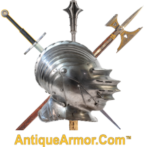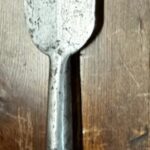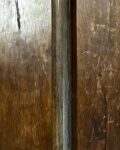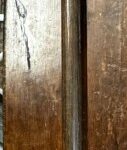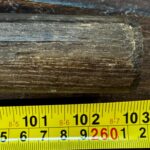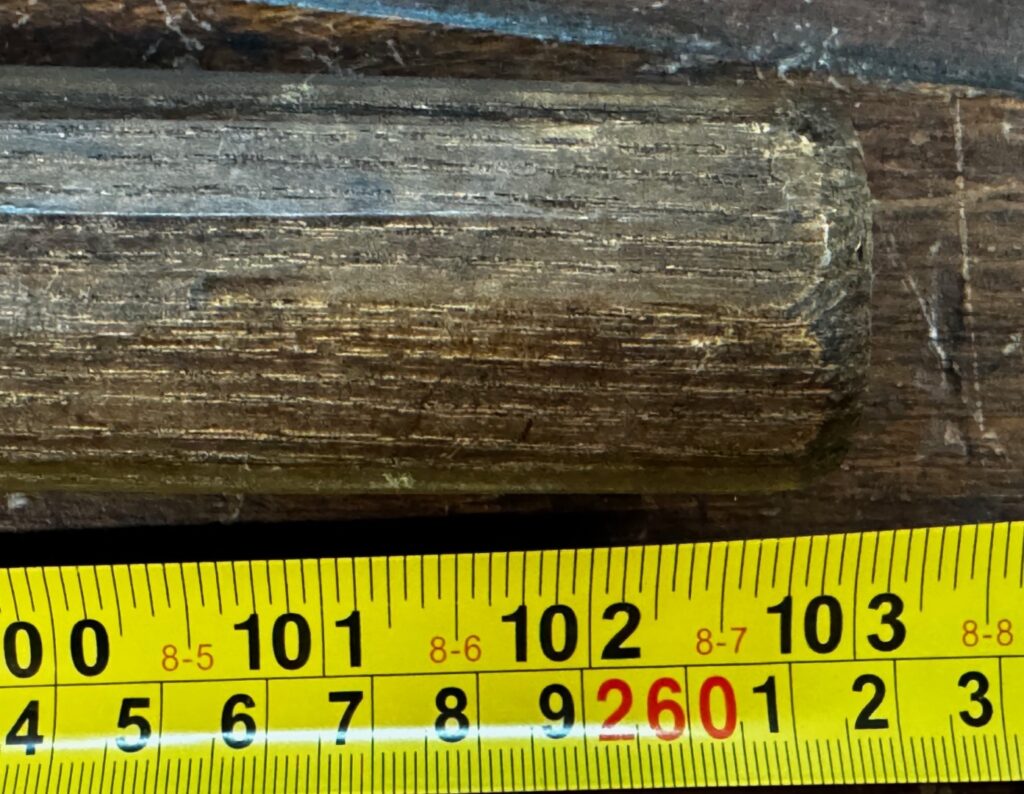1633 Partisan
1633) RARE “LANGUE DE BOEUF” PARTISAN CIRCA 1590: The rare “ox tongue” variant of the partisan. The Germans refer to it as an “ochsenzunge“. The Italians call it “lingua de bue”. The French, since 1441, refer to it as “langue de boeuf.” In an ordinance titled “Du costume militaire des Francais” dated 1446, French soldiers were required to be armed with the langue de boeuf, which was most popular during that period and for the next 300 years. This is a rare and massive bladed weapon.
Staff Weapon Discussion:
All types of staff weapons consist of several distinct parts. The first was the wooden pole/haft. The pole ranged from as little as 5 feet to 14 feet in length. Longer poles were used for ceremonial jousting and less often in combat situations. Metal vertical bands called langets or straps, secure the metal head to the pole vertically, about a third of the length of the haft. Depending on the type of staff weapon, the head could be used for stabbing, striking, chopping, pulling, or slicing. Several different functions were incorporated into a single metal weapon head in many staff weapons.
The staff weapon was an essential weapon of the Middle Ages for multiple reasons:
1) When properly used and deployed, staff weapons have a significant advantage related directly to their length. The pole/haft of a staff weapon can range from 5 feet in length to as much as 16 feet in length. The staff weapon enables the user to be out of the reach of many shorter weapons, such as swords. This reach advantage allows the man-at-arms to effectively attack without needing to defend himself from attacks.
2) Staff weapons, like pikes, could stop the cavalry charge, which was one of the most devastating strategies of the Medieval and Renaissance periods.
3) Since much of the staff weapon was made from wood, it was inexpensive and easy to manufacture, making it a practical choice to arm many men quickly at a low cost. In addition, if the pole broke, the head could be reused on a new wooden pole. Because the head design was relatively simple, it could be made by a village blacksmith.
4) Staff weapons are easy to use, requiring relatively little training to become competent in their use.
5) Staff weapons could be multipurpose weapons. For example, a halberd is an axe with a spear and fluke to dismount a knight from his horse.
6) Staff weapons require the use of multiple large muscles; therefore, the body fatigues more slowly than with some other weapons. Less fatigue in battle provides a substantial advantage during a pitched battle that could last days.
7) Since staff weapons are long and provide leverage, they generate high-impact, deep penetrating strikes.
8) Some staff weapons were actually farming implements available for immediate use by an owner familiar with their use.
ACT NOW so you won’t be disappointed!!!*
All my items come with the following:
–Free shipping.
–10-day review period.
–Certificate of Authenticity.
– Free autographed copy of my book if you do not have one.
– In the event of an international shipment, we will help assign the lowest correct Customs tariff so you pay the least as low as 5% or even nothing.
I believe you will be very pleased.
